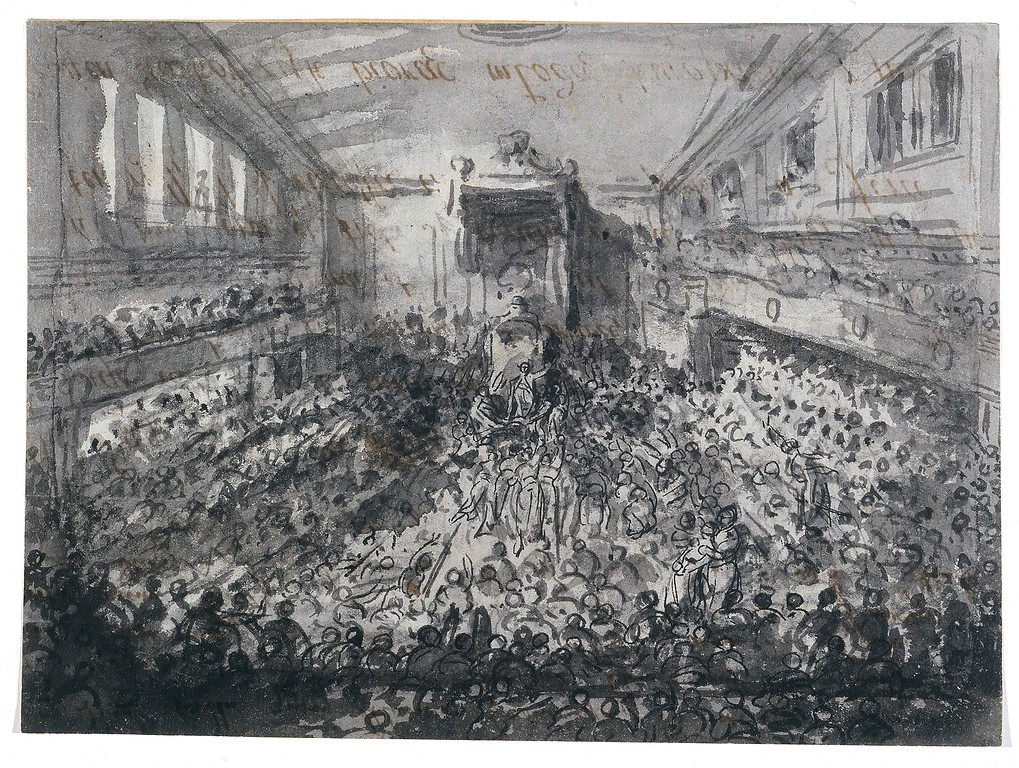Secrets of the Freemasons Revealed in Warsaw
A rare and telling exhibition at the National Museum in Warsaw retraces the history of one of the world's most secretive organisations.
What is Freemasonry?
The exhibition, curated by Tadeusz Cegielski, himself a Freemason, aims to shed light on the mysterious fraternal organisation. Is Freemasonry a broad social movement seeking to improve society and spread ideas of solidarity and self-help, or is it a cover-up for a narrow circle of people who are sceptical of democracy and its principles? Or, perhaps, it's rather an arcane system of initiation rites that lead to bizarre, archaic rituals?
"These alternative answers are still present in the common way of thinking about Freemasonry," explains Cegielski, "and they aren't necessarily exclusive. The Freemasons remain one of the most mysterious organisations in the history of Western culture." To let the audience seek their own answers, the exhibition has been arranged as a passage through those initiation rites, displaying nearly 500 objects.
Freemasons among us
Many directors, composers and doctors were Freemasons – actor, theatre director and playwright Wojciech Bogusławski; Chopin's teacher and a composer himself, Józef Elsner; General Jan Henryk Dąbrowski, a national hero praised in the Polish national anthem; or even the author of its lyrics, Józef Wybicki. Even the great Polish poet Adam Mickiewicz is known to have been involved with the movement. A small group with a lot of power, Freemasons are said to have had a large influence on Polish history. They played a role during the Four-Year Sejm (parliament) of the Polish-Lithuanian Commonwealth that was held in Warsaw between 1788 and 1792 and in the preparations for the Kościuszko Uprising against Imperial Russia and the Kingdom of Prussia in 1794.
Artefacts and rites
 Jewel of the Judge "Freedom Regained”, Lublin, brass
Jewel of the Judge "Freedom Regained”, Lublin, brassSome 500 objects are exposed at the National Museum. They range from objects used during ceremonies such as aprons, sashes, and jewels, to books, rare documents, scrapbooks and physical artefacts of historical importance to the fraternity. A multimedia presentation illuminates the rites and symbols of Freemasonry.
Embeded gallery style
display gallery as slider
Freemasonry paintings
Among the paintings are a few gems, including Portrait of Stanisław August Poniatowski with an Hourglass by Polish-Italian painter Marcello Bacciarelli from 1793. Here, the last king of Poland is surrounded by symbols which might indicate a link to Freemasonry.
Portrait of Ludwik Osiński in Masonic Attire by Antoni Brodowski was created around 1820 and gives an idea of the behaviour of the Grand Master, the president of the lodge who wields the gavel.
Embeded gallery style
display gallery as slider
Portrait of Stanisław Kostka Potocki from the beginning of the 19th century shows him as the chief of the Polish branch of the Freemasons.
Social Meeting in a Park under the Statue of Diana and Vote upon the Constitution of the 3rd of May 1791, both by Jean-Pierre Norblin de la Gourdaine, are entwined with the mysterious movement.
 "Vote upon the Constitution of the 3rd of May 1791" by Jean-Pierre Norblin de la Gourdaine (1745-1830), after 1791, drawing
"Vote upon the Constitution of the 3rd of May 1791" by Jean-Pierre Norblin de la Gourdaine (1745-1830), after 1791, drawingThe exhibition as a rite of passage
The exhibition has been constructed as an initiation rite and leads the viewer through the path taken by new recruits. From being a candidate to a full-fledged member, each room marks a rise in the ranks: the Room of the Lost Steps where new adepts search for how to enter the Lodge, the Chamber of Contemplation and Temple where they are taken through four classical elements, the three Lodges where meetings are held, and finally two Pro publico bono rooms exemplifying the humanitarian work of the members. The journey around the exhibition is terminated in the Mourning Lodge where a funeral is held.
The Masoneria Pro publico bono (Freemasonry Pro publico bono) exhibition opens at the National Museum in Warsaw on the 11th of September, 2014, and will be open till January 11th, 2015.
A series of talks, tours, workshops is to be held in parallel to the exhibition. Programme here.
Culture.pl is a patron of the exhibition.
Masoneria. Pro publico bono
Curated by: Professor Tadeusz Cegielski
Design by: Ewa Świder-Grobelna
Author: Mikolaj Glinski, translator: MJ 10/09/2014
[{"nid":"5688","uuid":"6aa9e079-0240-4dcb-9929-0d1cf55e03a5","type":"article","langcode":"en","field_event_date":"","title":"Challenges for Polish Prose in the Nineties","field_introduction":"Content: Depict the world, oneself and the form | The Mimetic Challenge: seeking the truth, destroying and creating myths | Seeking the Truth about the World | Destruction of the Heroic Emigrant Myth | Destruction of the Polish Patriot Myth | Destruction of the Flawless Democracy Myth | Creation of Myths | Biographical challenge | Challenges of genre | Summary\r\n","field_summary":"Content: Depict the world, oneself and the form | The Mimetic Challenge: seeking the truth, destroying and creating myths | Seeking the Truth about the World | Destruction of the Heroic Emigrant Myth | Destruction of the Polish Patriot Myth | Destruction of the Flawless Democracy Myth | Creation of Myths | Biographical challenge | Challenges of genre | Summary","topics_data":"a:2:{i:0;a:3:{s:3:\u0022tid\u0022;s:5:\u002259609\u0022;s:4:\u0022name\u0022;s:26:\u0022#language \u0026amp; literature\u0022;s:4:\u0022path\u0022;a:2:{s:5:\u0022alias\u0022;s:27:\u0022\/topics\/language-literature\u0022;s:8:\u0022langcode\u0022;s:2:\u0022en\u0022;}}i:1;a:3:{s:3:\u0022tid\u0022;s:5:\u002259644\u0022;s:4:\u0022name\u0022;s:8:\u0022#culture\u0022;s:4:\u0022path\u0022;a:2:{s:5:\u0022alias\u0022;s:14:\u0022\/topic\/culture\u0022;s:8:\u0022langcode\u0022;s:2:\u0022en\u0022;}}}","field_cover_display":"default","image_title":"","image_alt":"","image_360_auto":"\/sites\/default\/files\/styles\/360_auto\/public\/2018-04\/jozef_mroszczak_forum.jpg?itok=ZsoNNVXJ","image_260_auto":"\/sites\/default\/files\/styles\/260_auto_cover\/public\/2018-04\/jozef_mroszczak_forum.jpg?itok=pLlgriOu","image_560_auto":"\/sites\/default\/files\/styles\/560_auto\/public\/2018-04\/jozef_mroszczak_forum.jpg?itok=0n3ZgoL3","image_860_auto":"\/sites\/default\/files\/styles\/860_auto\/public\/2018-04\/jozef_mroszczak_forum.jpg?itok=ELffe8-z","image_1160_auto":"\/sites\/default\/files\/styles\/1160_auto\/public\/2018-04\/jozef_mroszczak_forum.jpg?itok=XazO3DM5","field_video_media":"","field_media_video_file":"","field_media_video_embed":"","field_gallery_pictures":"","field_duration":"","cover_height":"991","cover_width":"1000","cover_ratio_percent":"99.1","path":"en\/node\/5688","path_node":"\/en\/node\/5688"}]